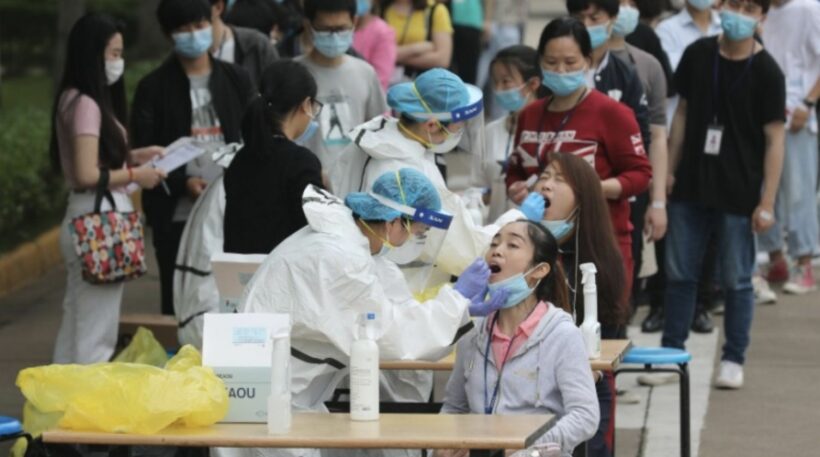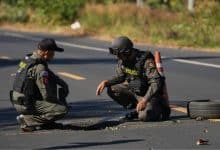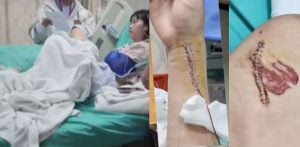Timeline of a pandemic – the early days of Covid-19

The most critical time in the Covid-19 story is obviously early January this year, when either confusion or a lack of concrete knowledge, caused delays in public information about the seriousness of a possible new coronavirus. It was, indeed, a novel coronavirus, difficult to identify without a history or a published RNA sequence for comparison.
In the last weeks of December 2019, and the early weeks of 2020, no one had a clue about what was ailing a small number of Wuhan hospital patients.
Both the US and China’s leadership have sought to ‘massage’ the narrative, and re-write the timeline of this critical 2 week period, to suit political agendas. But it is clear, that by the end of the second week of January, there was public knowledge that there was a new virus in town.
Specifically, Wuhan.
On January 8, 2019, the Wall Street Journal was already reporting on the matter – the information was now public and being shared around the world. The critical questions are “what did they know” and “when did they know it”.
As of today (Saturday, October 11), the world total number of infections has pushed through 37 million cases, and the total number of deaths has reached 1,077,000. The ‘hotspot’ focus has moved from China and Europe in the early months, to the US, India Brazil, in this phase of the pandemic. New surges in Europe and the UK, as well as the spread of the virus in South American countries, is the WHO’s latest focus of concern. The number of new daily infections around the world is continuing to accelerate – in the past 2 days, alone, there has been 355,000+ new cases each day.
The early days of a pandemic
The World health Organisation publicly applauded China for its swift response and congratulated them on their quick sequencing of the novel coronavirus’ genome throughout January. But China had sat on releasing the genetic map for more than a week after 3different Chinese labs had independently decoded the information.
Was it saving face? Was it a malicious attempt to withhold information? Was is “wanting to be sure” before a public announcement about a new virus? The latter appears to represent the situation as the timeline unfolds, but others point to the mismanagement as a ‘plot’ or even a deliberate obfuscation.
A report by Associated Press suggests that, rather than colluding with China, as US President Trump keeps insisting, the World Health Organisation was left in the dark as China only offered up only the minimal information required by international law. But the world health agency continued to publicly portray China in the best light, most likely as a strategy to secure more information from the reluctant Chinese health officials.
To this day, World Health Organisation officials genuinely believe Chinese scientists had achieved “a very good result” in detecting and decoding the genome of the new virus, despite the lack of transparency from Chinese officials.
Here’s how the situation unfolded…
Sometime in mid-December 2019, doctors in Wuhan noticed mysterious groups of patients with fevers and breathing problems. The patients weren’t improving with standard flu treatments. So they sent test samples from patients to commercial labs in China for analysis.
December 27, 2019
Vision Medicals had sequenced most of the genome of a novel coronavirus with “striking similarities to SARS”. They shared its data with Wuhan officials and the Chinese Academy of Medical Sciences. This was published in the Chinese finance publication Caixin.
December 30, 2019
Wuhan health officials shared internal memos about the “unusual pneumonia”. Some of these leaked on social media. Shi Zhengli, a scientist specialising in coronaviruses at the Wuhan Institute of Virology, famous for being able to trace the original SARS virus back to bats living in a cave, was told about the new strain of coronavirus. She immediately headed back from a conference in Shanghai to Wuhan to investigate the situation.
December 31, 2019
• This was the first time the World Health Organisation learned about the mysterious pneumonia cases from an open-source internet platform that searches for any mentions on outbreaks anywhere in the world, according to the WHO’s chief of emergencies, Dr. Michael Ryan. The WHO were contacted by their regional office about the finding of the internet reports.
• Chinese Centre for Disease Control and Prevention director Gao Fu sent experts in the field of viruses to Wuhan.
January 1, 2020
World Health Organisation officials requested more information from Chinese health affiliates. Members of the WHO have 1-2 days to respond. Chinese officials reported 48 hours that there were 44 cases of the novel coronavirus and no deaths at that stage.
January 2, 2020
• The entire genome of the virus was published by Shi Zhengli, according to a notice posted on the institute’s website.
• Scientists agree that Chinese scientists detected and sequenced the then-unknown pathogen with astonishing speed. WHO director general Tedros Ghebreyesus would later say China set “a new standard for outbreak response.”
January 3, 2020
China’s National Health Commission issued a confidential order for institutions that had samples of the virus to destroy them or send them to selected institutes for safe storage. The memos, first reported by Caixin Global, would not allow labs to publish news about the virus without the Chinese government’s authorisation.
The same order prevented Shi Zhengli’s laboratory from releasing the genetic sequence or publishing warnings of potential dangers or other information.
January 3, 2020
The Chinese Centre for Disease Control and Prevention had independently sequenced the novel coronavirus.
January 5, 2020
The Chinese Academy of Medical Sciences had now decoded the sequence, prepared and submitted a report about the novel coronavirus.
By now three independent laboratories had decoded and analysed the new virus but Chinese government health officials said nothing official at this stage or released any public statements.
January 5, 2020
• The World Health Organisation reported on their Twitter account that “investigations were under way into an unusual cluster of pneumonia cases with no deaths in Wuhan, China”. It would share “more details as we have them.”
• The Shanghai Public Clinical Health Centre, led by a highly respected Chinese virologist Zhang Yongzhen, was the latest to sequence the virus. He submitted the sequencing information to the GenBank database, where it sat awaiting review. He also notified the Chinese National Health Commission. He warned that the “new virus was similar to SARS and likely infectious”.
• The World Health Organisation says, based on preliminary information they had obtained from China… “there was no evidence of significant transmission between humans, and did not recommend any specific measures for travellers”.
• The Chinese CDC raised its emergency level to the second highest and technicians started to isolate the virus, prepare testing guidelines and design testing kits. The Chinese CDC didn’t have authority to declare public warnings. The raising of the emergency level was even kept secret from many of their own staff.
From January 6, 2020
• For the next two weeks, the Wuhan officials reported no new infections. Chinese officials censored information from doctors who continued to warn of “suspicious pneumonia-like cases”. But cases were “few” and some CDC researchers didn’t believe at the time that the virus easily spread between humans.
• Researchers found the novel coronavirus (still without an official designation) used a distinct spike protein to bind itself to human cells.
• Thai media reports about a pneumonia-like outbreak in Wuhan, China. Read our report HERE.
“A viral pneumonia outbreak in the central Chinese city of Wuhan is causing concern across the region. At least 59 patients there have been placed under observation so far.”
January 7, 2020
• Yet another team at the Wuhan University had sequenced the novel coronavirus confirming Shi Zhengli’s analysis that the pathogen was a novel coronavirus. But Associated Press reports that the Chinese CDC experts said they “didn’t trust Shi’s findings and needed to verify her data before she could publish”.
• Associated Press allege that the major factor behind the gag from the Chinese CDC order was that they wanted to publish their papers first.
“They wanted to take all the credit,” according to Li Yize, a coronavirus researcher at the University of Pennsylvania.
• As days passed even some of the Chinese CDC’s staff were wondering why it was taking so long for Chinese authorities to officially identify the novel coronavirus.
January 8, 2020
• The Wall Street Journal reports that scientists had identified a novel coronavirus in samples from pneumonia patients in Wuhan. The article pre-empted and embarrassed Chinese officials. Many lab technicians in Wuhan admitted the first they heard about the novel coronavirus was the story in the WSJ.
Dr. Tom Grein, chief of the World Health Organisation’s acute management team says the health agency looks “doubly, incredibly stupid.”
“The fact is we’re two to three weeks into an event. We don’t have a laboratory diagnosis, we don’t have an age, sex or geographic distribution, we don’t have an epidemic curve (a graphic of outbreaks used to indicate the progress of an epidemic).
• Chinese state media, precipitated by the WSJ article, officially announced the discovery of the novel coronavirus.
• Despite the public broadcast of the information, now available to the world, Chinese health authorities still did not release the genome of the new virus. They also continued to withhold diagnostic tests and patient data that would provide information about how infectious the virus was.
• Thai airport officials take a female passenger from Wuhan aside “with a runny nose, sore throat, and high temperature”.
“A first case of ‘New Coronavirus Pneumonia’ has been identified in Thailand, but the Public Health Ministry is assuring the public there is no wider outbreak of the virus. The mystery virus has now been identified by Chinese scientists and was earlier nicknamed as the mystery Wuhan pneumonia.”
• Professor Supaporn Wacharapluesadee from Chulalongkorn University in Bangkok found the passenger was infected with a new coronavirus, very similar to what Chinese officials had mentioned. She and her team independently figured out the genetic sequence by January 9 and reported the findings to the Thai government.
• Because Chinese authorities hadn’t officially published any genetic sequences the team were unable to corroborate their findings. They were unable to prove the passenger’s virus was the same one sickening residents in Wuhan.
January 9, 2020
A 61 year old man died in Wuhan, the first known death from the novel coronavirus. The man’s death wasn’t reported until January 11.
• World Health Organisation officials registered their complaints in internal meetings that they were seeking more data, especially the possible rate of infection between humans.
• The WHO’s chief of emergencies, Dr. Michael Ryan forecast the future narrative that would emerge as some world leaders would try and deflect their own inaction over the early days of the pandemic in their nations….
“The danger now is that despite our good intent… especially if something does happen, there will be a lot of finger-pointing at WHO.”
January 11, 2020
• The Shanghai Public Health Clinical Centre finally published a sequence on virological.org, a popular website used by researchers to share information about pathogens. This reportedly angered Chinese officials from the CDC. The next day the laboratory was temporarily closed by health authorities.
• Thailand’s Dr. Supaporn compared her sequence with Dr. Zhang from the Shanghai Public Health Clinical Centre and found it was a 100% match, confirming that the Chinese patient in Thailand had the same virus detected in Wuhan.
• Thailand informed the World Health Organisation of the case.
• The Chinese CDC, the Wuhan Institute of Virology and the Chinese Academy of Medical Sciences worked together to publish their sequences, gather patient information, prepare reports and send them to the Chinese National Health Commission for approval, according to documentation obtained by Associated Press.
January 12, 2020
• The three Chinese labs together finally published the genetic sequence of the novel coronavirus on GISAID, a platform for scientists to share genomic data. GISAID is based in Germany.
• Around 600 people had been infected in the past week.
January 13, 2020
• The World Health Organisation announced that Thailand had a confirmed case of the virus.
• The next day, according to Associated Press, a confidential teleconference was held where China’s top health official told the country to prepare for a pandemic, describing it as “most severe challenge since SARS in 2003”. Chinese CDC staff across China initiated screenings, isolations, and testing for cases of the novel coronavirus. They found “hundreds”.
• As the Chinese CDC internally declared a level one emergency, Chinese officials still maintained the chance of sustained transmission between humans was low. This led to an official statement from the World Health Organisation that would come back to haunt them…
Maria Van Kerkhove, the American infectious disease epidemiologist, speaking at a press briefing on January 13 said “it is certainly possible there is limited human-to-human transmission.” Just hours later, the WHO tweeted that “preliminary investigations conducted by the Chinese authorities have found no clear evidence of human-to-human transmission”.
The timings of these two statements have been used by critics to slam the WHO for issuing misleading information.
January 20, 2020
• Zhong Nanshan, heading up an expert team and a renowned government infectious diseases doctor, declared publicly that the new virus was spreading between people. He had just returned from Wuhan.
• Chinese President Xi Jinping called for the “timely publication of epidemic information and deepening of international cooperation.”
• The UN health agency dispatched a small team to Wuhan for two days, including Dr. Gauden Galea, the WHO representative in China. Galea recalled that the WHO’s Chinese counterparts were “talking openly and consistently” about human-to-human transmission. Dr. Galea reported to WHO colleagues in Geneva that China’s main request to the WHO was for help “in communicating this to the public, without causing panic.”
January 22, 2020
TheWHO convened a specialist committee to determine whether to declare a global health emergency. After two inconclusive meetings where experts were split, they decided against it.
• Chinese officials order the largest ever ‘lockdown’ in history of an entire population in Wuhan.
• Asked by a CNBC reporter whether there were any concerns about the virus spreading to the US, President Trump said: “We have it totally under control. It’s one person coming in from China, and we have it under control. It’s going to be just fine.”
January 23, 2020
WHO chief Tedros publicly described the spread of the new coronavirus in China as “limited.”
January 30, 2020
The World Health Organisation finally declares an international health emergency.
SOURCES: Reuters | Associated Press | Oxford University | WHO
Latest Thailand News
Follow The Thaiger on Google News:


























